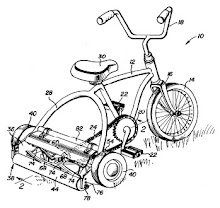 A talk this week on product development included this diagram about the "product requirements death spiral". As befits NASA, it casts iteration in development as a black hole which can only be escaped by finalizing a design and achieving escape velocity. A different part of the same talk covered "Death, Taxes, and Change Requests." When working in heavy iron industries like aerospace or automotive, I can understand a certain weariness about design changes.
A talk this week on product development included this diagram about the "product requirements death spiral". As befits NASA, it casts iteration in development as a black hole which can only be escaped by finalizing a design and achieving escape velocity. A different part of the same talk covered "Death, Taxes, and Change Requests." When working in heavy iron industries like aerospace or automotive, I can understand a certain weariness about design changes.
The telling comparison is to look at the agile software iterative development spiral. It assumes and even celebrates changes, viewing development as an experimental process. Lessons learned from one prototype are applied to the next version. Changes aren't the exception, they are part of the process.
Once upon a time, I got frustrated when a broad-consensus group design decision was reversed later in development. It seemed inefficient to backtrack. Eventually, I learned that paper prototyping and whiteboard sketching can only take you so far. Stakeholders will always change their minds. In fact, they should. We learn so much by seeing an implementation in the flesh that the product can become markedly better if we listen to those lessons.
Lately I have been wondering how to port this more nimble and experimental software model back into the physical world. I enjoy working on software precisely because of this level of freedom. But there is a lot of appeal to building something out of atoms instead of bits. I wonder if someday 3D printing and rapid manufacturing will enable true iterative development on heavy iron.


http://fora.tv/2010/06/14/WIREDs_Chris_Anderson_Atoms_Are_the_New_Bits#Chris_Anderson_From_DIY_Invention_to_Entrepreneurship
ReplyDelete